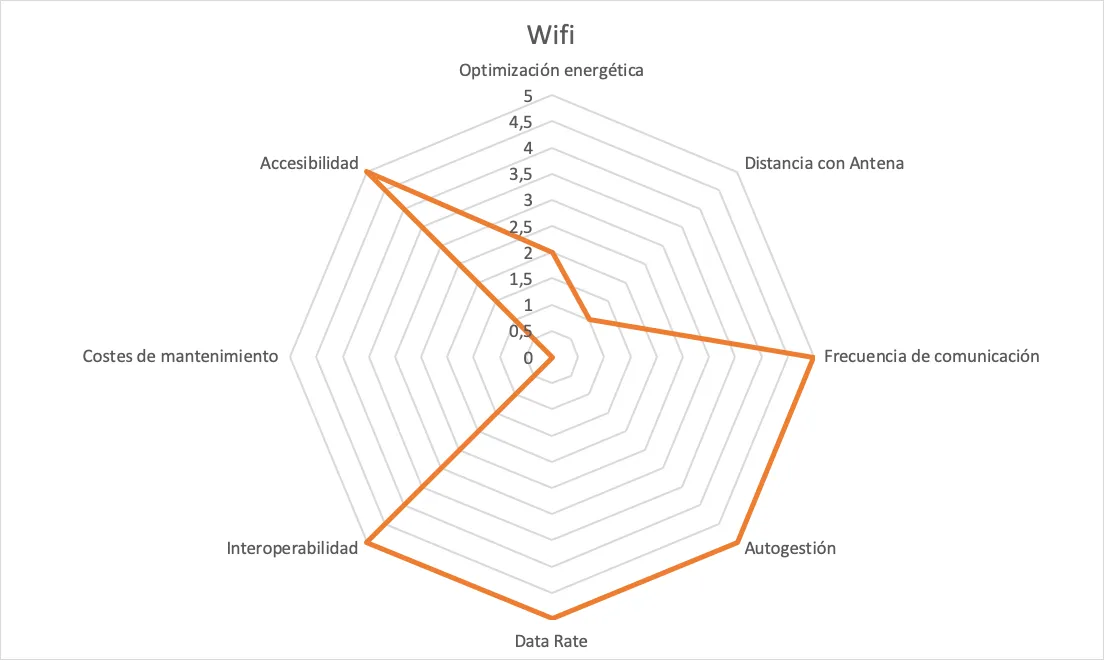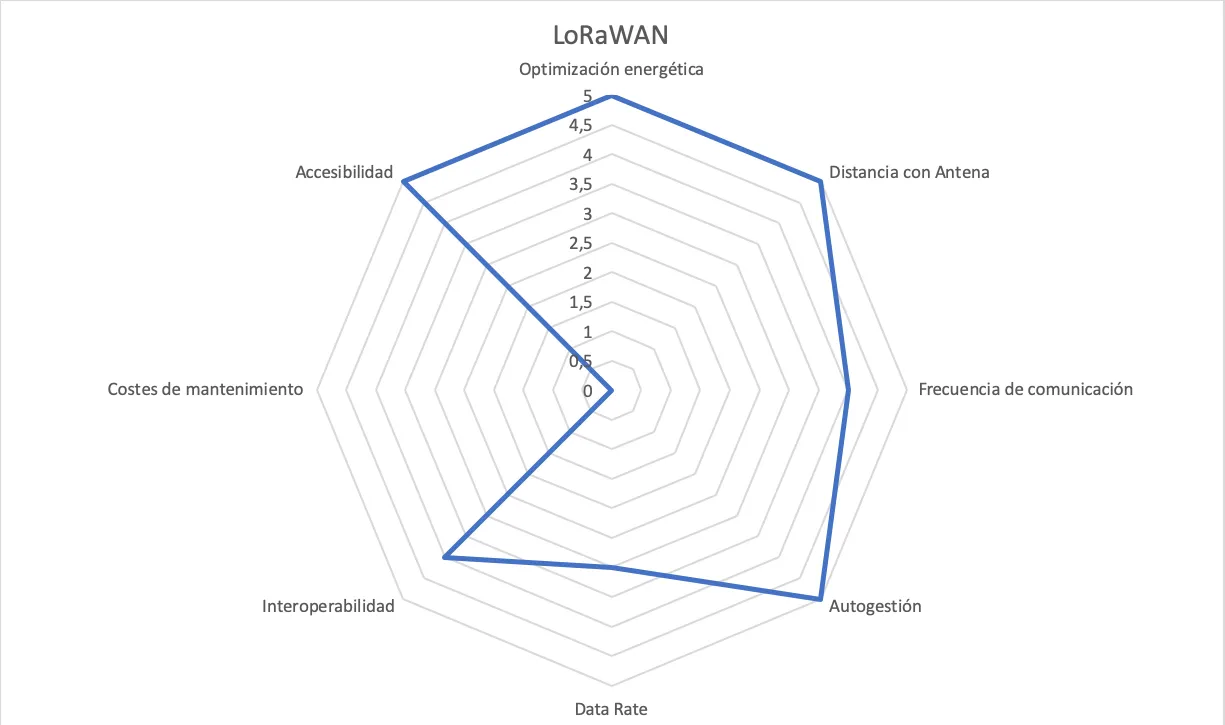LPWAN: What They are and What They are Used For
Currently, there are three major LPWAN (Low Power Wide Area Networks) technologies. We explain the main aspects of each of them

LPWAN (Low Power Wide Area Networks) networks are wireless communication technologies that allow data to be transmitted between a device and a base station/Gateway separated by hundreds of meters or kilometers with very low energy consumption.
Due to their characteristics, these technologies are enabling the deployment of the largest current IoT initiatives. Being specifically designed for this environment, they allow the installation of dozens or hundreds of nodes distributed over a large area, powered by batteries that last for years and without the need for large infrastructures or expensive cable runs.
Wireless transmission technologies pivot on three axes: energy consumption, range or distance between node and antenna, and, finally, transmission capacity or data rate. There is currently no technology that covers all three axes very well; instead, one is sacrificed to enhance the others. Think, for example, of 4G, it has very good range, very good data rate, but its transmission consumes a lot of energy – if we want to extend the battery life, we put the mobile in airplane mode –. Another example is Bluetooth, very low energy consumption, good data rate, but a very limited range. LPWANs are technologies that, in order to have very good range and very low consumption, sacrifice the amount of data they can transmit. That is why when we talk about LPWAN technologies, we can never think of transmitting KBs or MBs in each message.

Currently, there are three major LPWAN technologies:
1. Sigfox
Sigfox is an operator LPWAN technology, that is, there is a company called Sigfox that has been responsible for deploying a large antenna infrastructure throughout Spain to cover the entire territory. Any device can, by paying a subscription, use this network to transmit its data as long as the rules of use established by Sigfox are met. As an operator, it offers not only the network and its maintenance, but also makes the data sent by the nodes available in its backend (accessible via API). In a system that uses Sigfox, the data always passes through its infrastructure.
It should be noted that they have the great merit of being the first major LPWAN technology deployed in Spain and the one that, currently, has been used in the most projects. Its functional pros are the coverage they offer, how easy it is to subscribe, and its total accessibility. On the contrary, it is a technology that can send few messages per day (maximum of 1 every 10 minutes of uplink and only 4 daily of downlink) and few bytes each.
2. LoRaWAN
LoRaWAN is a standard developed on the LoRa radio modulation with a high implementation in Europe. While it is true that it can be an operator network offered by several companies in the same territory, here in Spain there are still no operators that offer coverage throughout the territory. But what is interesting about LoRaWAN is that, unlike other LPWANs, it allows the deployment of self-managed private networks. In a self-managed network, the limits are those set by the ETSI, which are much less restrictive than the limits imposed by a private operator. This fact opens up a wide range of possibilities for carrying out local IoT initiatives for controlling small or medium-sized areas (a building, a factory, a port, a city, etc.). Obviously, they require knowing the technology a little more technically and having to manage the network, but it allows setting up networks anywhere – operator networks will hardly reach all the interiors of a building – and lower maintenance costs.
3. NB-IoT
NB-IoT is an operator LPWAN technology offered by the same telecommunications companies that offer mobile phone networks, that is, it is the technology that Telecoms offer to the IoT ecosystem.
In addition to certain technical differences, the main functional difference with Sigfox is that large NB-IoT networks are not deployed or accessible throughout the territory. The current status of this technology is that, if the project is interesting in terms of the volume of equipment, the operator in question (Movistar, Vodafone, Orange, …) sets up a network dedicated to that project. However, if the project is small, there is no network to subscribe to. This is expected to change in the coming years.
Comparative Graphics

 |
 |
 |
 |

Comments on the Graphs:
- We have compared the possibility of using LoRaWAN in a self-managed private network.
- Accessibility refers to the ease with which a user can use this technology
- Interoperability refers to the ease of integrating the equipment that uses this communication technology with the rest of the user’s control systems
As can be quickly observed, for IoT projects where an operator is required, it is necessary to carefully study which technology best suits the needs and budget we are managing. On the contrary, if what you want is to set up a private network to sensorize or to control devices in a warehouse, in a factory, in a port, in a parking lot, etc. that communicates directly with the control system already installed, setting up your LoRaWAN network is the best option.
If you are interested in seeing more possibilities offered by LoRaWAN, we encourage you to read these other entries on how this technology can help you in the management of your factory, your warehouse or your outdoor facilities. Do not hesitate to contact us if you have more questions or want to know more about LoRaWAN!






